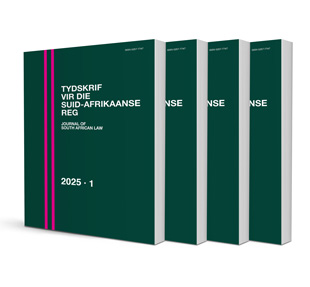
REGSPRAAK
Die fidusiêre plig in Suid-Afrika: ’n vierkantige pen in ’n ronde gat?
Author: E Nel
ISSN: 1996-2207
Affiliations: Nelson Mandela University
Source: Tydskrif vir die Suid-Afrikaanse Reg, Issue 2, 2025, p. 368-377
https://doi.org/10.47348/TSAR/2025/i2a10
Abstract
The fiduciary-duty concept and its practical application by South African courts, with the Dlhomo case as an example, is subjected to scrutiny. In general, it is submitted that the fiduciary duty is the result of a particular relationship which is of a fiduciary nature, subject to certain primary common-law principles. In the case of the trustee, the relationship is framed in the context of a stipulatio alteri. Although the fiduciary relationship may have contractual characteristics, it also supports the communal interests of the parties involved. It is submitted that presiding officers often do not make an effort to consider the legal nature and origin of the fiduciary concept or critically evaluate the underlying relationship. In some instances, due to a results-driven focus, the facts are overly emphasized and the legal basis neglected, preventing the proper development of fiduciary law. It is submitted that the correct application of a clearly defined fiduciary legal theory will ultimately lead to better results.
In the Dlhomo case, no proper differentiation is made between the two different roles of the defendant, namely as trustee and as chief executive officer. The function of a person in a fiduciary role per se versus his or her duties in a purely managerial position were not considered by the court. The facts of this case emphasize the need to differentiate between the fiduciary function and other trust roles an individual may be engaged in at the same time. In each matter, the circumstances should be properly investigated to determine whether one or more fiduciary relationships did indeed exist. The respondents’ fiduciary duty in her position as trustee was indisputable, while the legal nature and extent of her position as chief executive officer was less obvious. It is unclear whether as manager her duty to act in good faith was the same as, or similar to, the fiduciary duty associated with trusteeship.
It is submitted that this question can be answered satisfactorily only if the requirements for the establishment of a fiduciary duty have been determined. The failure of courts properly to analyse fiduciary relationships and their resulting duties is inhibiting the establishment of objective fiduciary-law principles.